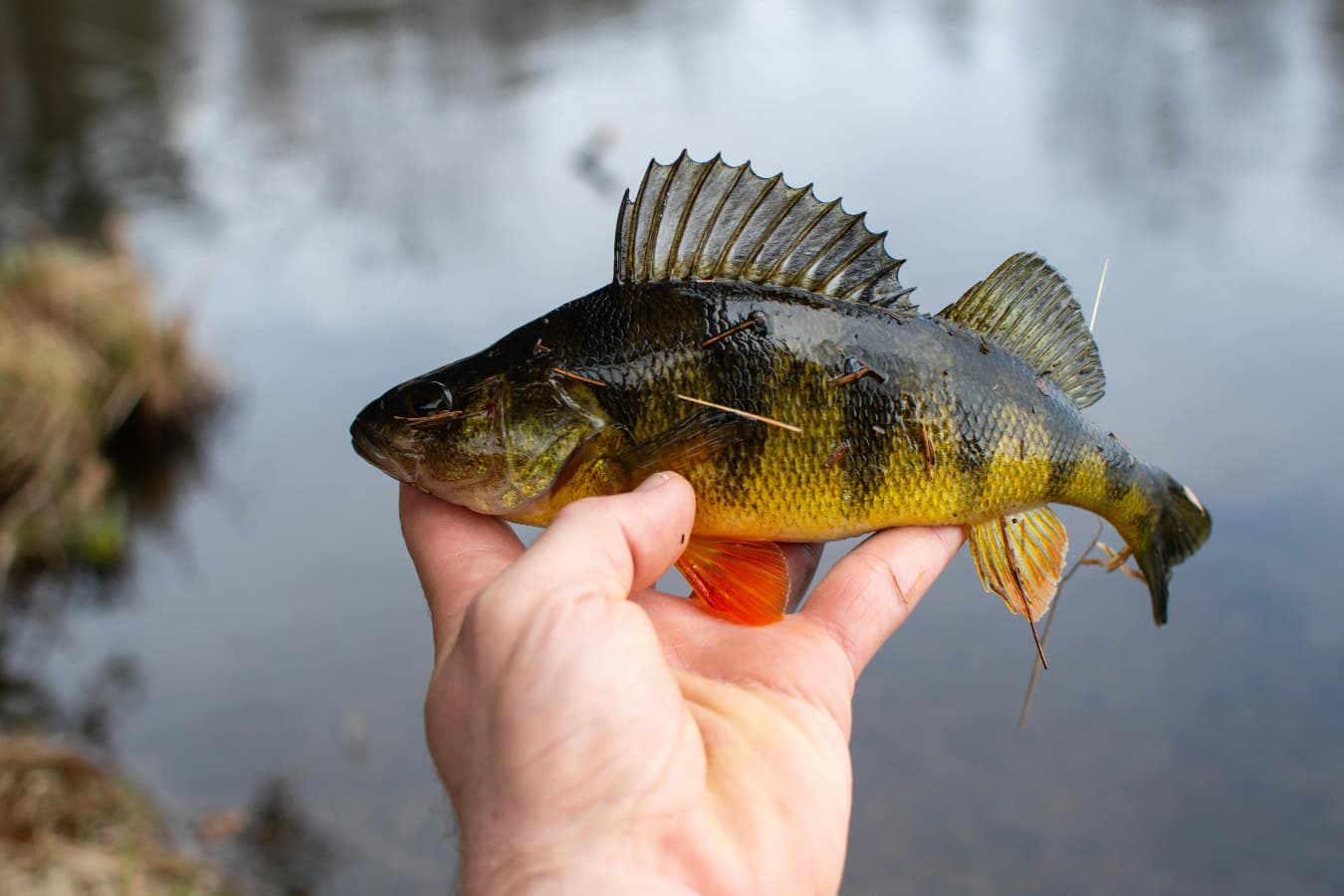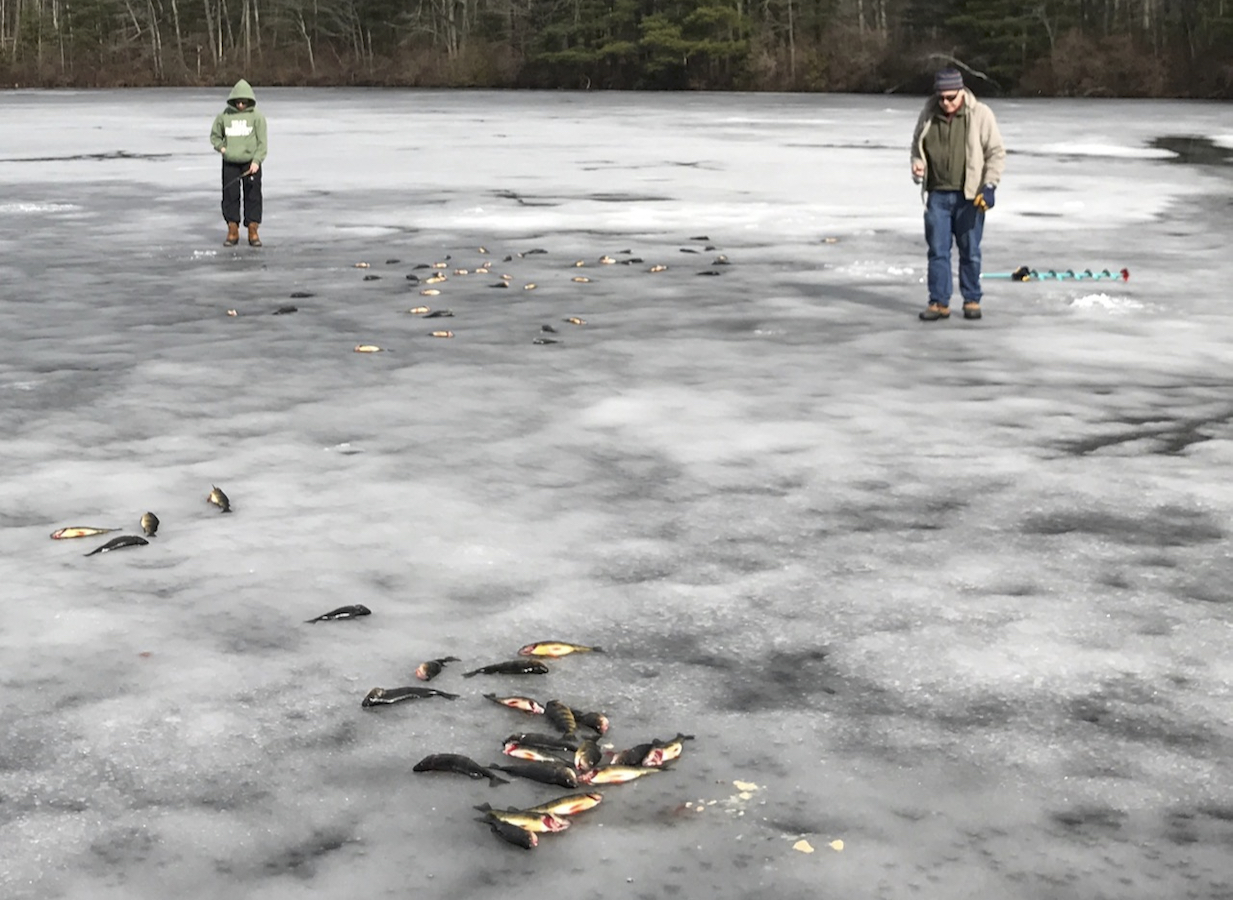Forever Chemicals in Fish: Don’t Panic About Eating Freshwater Fish.

Image by Michal Dziekonski
On January 17, 2023 the Environmental Working Group (EWG) circulated a release announcing its study of PFAS in freshwater fish from “across the United States.”
EWG is a non-profit whose stated mission is “to use the power of public information to protect public health and the environment.” PFAS (polyfluoroalkyl substances) consist of at least 4,700 chemicals in thousands of products. They break down slowly, hence their alternate name “forever chemicals.” They’re reported by EWG to be “associated with” sundry “health harms.” EPA and independent toxicologists agree.
PFAS need to be banned. Partial bans have already been implemented in New York, California, Maine and Colorado. And on Jan. 13, 2023, the Netherlands, Germany, Denmark, Sweden and Norway moved toward a European ban by submitting a restriction proposal to the European Chemicals Agency. A U.S. ban may soon be unnecessary. Spooked by the liability, companies are no longer manufacturing PFAS or are phasing them out.
EWG’s release about its study went viral and was invariably presented as fact by the media. The study itself was invariably ignored. I was unable to find a single news report among hundreds that questioned or critiqued EWG’s methodology.
The release has fomented public panic about eating one of the healthiest foods available. Fish provide protein and omega-3 fatty acids, known to enhance cognition, protect the heart, strengthen the immune system, and build muscles. Doctors routinely ask patients if they’re eating enough fish.
I catch lots of yellow perch, in my opinion the best-eating of all freshwater fish. I don’t like to freeze fish. So the perch my wife and I can’t eat go to friends and relatives. Now some are afraid to eat them.
First, let’s vet EWG’s release. We’re told in a banner headline that “Eating one freshwater fish equals a month of drinking ‘forever chemicals’ water.” What water, where, and contaminated with what level of forever chemicals? We’re not told.
Freshwater fish from where? We’re not told in the release. But in the study we’re told that it’s fish from “across the United States.” The message is clear—we shouldn’t eat freshwater fish from anywhere in America, ever.
I and my angling friends catch and eat trout, wild and stocked, from the Quabbin Reservoir system, the drinking water supply for Greater Boston. With a capacity of 412 billion gallons, Quabbin is among the largest reservoirs in the nation. Should we be concerned? EWG doesn’t tell us because its study about PFA-contaminated fish from “across the United States” doesn’t mention fish from Quabbin Reservoir. In fact, it doesn’t mention fish from any reservoir across the United States — not one.
For perch and other panfish I fish only small, isolated ponds. Should I be concerned? PFAS are carried by rain that pollutes isolated ponds, but with trace amounts so small they usually can’t be measured. So eating and giving away panfish from such waterbodies is not among the things I fret about.
But I can’t convince friends and relatives not to fret because, other than the Great Lakes (known PFA hotspots, especially along the developed shorelines where most of the samples were taken), the EWG study doesn’t report samples from ponds or lakes across the United States, not one—just major rivers, many heavily polluted.
Consider Minnesota — “Land of Ten Thousand Lakes” (actually, 11,842). The media and the public aren’t informed in the release that the only stillwater body EWG looked at in the entire state was Lake Superior.
Yet data about PFAS in fish from ponds, lakes and reservoirs across the United States are readily available. For example, Catherine Neuschler, Water Assessment Section Manager for the Minnesota Pollution Control Agency, told me this: “We’ve been monitoring PFAS in fish from lakes and rivers across the state since 2004. We have a lot more data than just the two data sets they [EWG] chose to look at. If you can cut off the source of PFAS, you can see very quickly that the levels in fish go down.”
The Minnesota Department of Health reports: “Perfluorooctane Sulfonate (the PFA of most concern in fish) is found at low levels in fish throughout the state. Higher levels have been found in fish from some waters in the metro and Duluth areas.”
In my state of Massachusetts fish sampling for PFAS by the Department of Public Health has led to health advisories for fish from five Cape Cod ponds. But the department stresses that all trout from these five ponds (the main targets by far) are safe to eat because they’ve spent most of their lives in hatcheries.
I learned from the Boston Water and Sewer Commission that PFAS in Quabbin Reservoir are so low they’re undetectable. The state’s health advisory for daily exposure to PFAS in drinking water for a lifetime is 20 parts per trillion (PPT). PFA levels in about 75 percent of the state’s municipal water supplies are between 0 and 20.5 PPT. So if Massachusetts anglers eat only trout from the five Cape Cod ponds flagged by the Department of Public Health and avoid fish (other than stocked trout) from polluted water elsewhere, they have little to worry about.

Roger and Patti Cohn jiggering for perch on Secret Pond, central Massachusetts. Photo by Ted Williams
In the “highlights” of EWG’s study, we’re told that the median concentration of PFAS in fish “across the United States” is 11,800 PPT. Reading past the boxed highlights, we learn that this is false. That median is for the Great Lakes only. The reported median “across the United States” is 9,500 PPT.”
One PPT equates to one ounce in 7.5 billion gallons of water. Why would EWG measure PFAS in fish by parts per trillion? That’s the standard for measuring PFAS in drinking water. The standard for measuring PFAS in fish is parts per billion (PPB).
EWG has these data in PPB. It even offers them in its study, but only in an Excel chart the media and public can’t easily find because it’s buried in a supplemental table that needs to be downloaded. One sample from the Potomac River is reported as 7.257 PPB. That wouldn’t look so bad to the media and the public if they could find it. But converted to PPT it looks scary — 7,257. If converted to the standard PPB, EWG’s reported median of 9,500 PPT “across the United States” would go to 9.5.
What EWG calls its “study” isn’t a study at all. It’s mostly a review of cherry-picked data from a 2013 to 2015 EPA study. With the manufacture of PFAS stopped or largely phased out since then, one would expect today’s fish samples to be less contaminated. Between 1999 and 2017, PFA blood levels dropped 85 percent in the U.S. population despite the fact that from 2014 to 2018, 44 percent of Americans added more fish to their diets.
This from Francis Brautigan, Chief of Fisheries for the Maine Department of Inland Fisheries and Wildlife: “The rivers, especially in the Northeast, are historical dumping grounds for all kinds of municipal and industrial waste. Most of our major rivers have advisories for contaminants… I can understand why there was a reaction to the [EWG] article. I think it suggested things based on a very limited data set and focused on waters with a long history of industrial and municipal discharge. The suggestion that all rivers in the country should be subject to a health advisory came from a student by the way, not from any scientific institution. Some of the more sensationalized comments that the media picked up on were from students working on the project. We undertook an investigation this past year where we collected samples from fish tissues mostly from lakes and ponds including a lot of remote ones. Before we release any information to the public I want to make sure it’s accurate. The last thing I want to do is create any more misunderstanding or misinformation.”
EWG offers PFA data on grocery-store seafood reported by the U.S. Food and Drug Administration (FDA) — mostly farmed and saltwater species, the vast majority of fish consumed by Americans. FDA measured 20 PFAS in 167 samples of seafood. Most fish samples had no detectable levels of PFAS. But levels were skewed, not by fish, but by contaminated clams imported from China and contaminated crabs imported from Indonesia. (They’ve been recalled.) Not referenced in the EWG study was this FDA statement: “Overall, our findings did not detect PFAS in the vast majority of the foods tested. In addition, based on the best available current science, the FDA does not have any indication that these substances are a human health concern.”
What is the human health concern posed by PFAS? There’s certainly justifiable concern, but what are the specific threats? The statement from EWG and others that “health harms” are “associated with” PFAS is interpreted by the media and public as “caused by” PFAS. But there’s not enough science to give us a decent understanding of what is or isn’t caused by PFAS. The Minnesota Department of Health offers this: “While we believe the immediate health risks for most people exposed to PFAS are low, the latest information indicates that fetuses and infants are more vulnerable.”
There’s not even enough science for agencies and countries to agree on what should be the health advisory for daily exposure to PFAS in drinking water for a lifetime. Australia and New Zealand set it as 560 PPT, the World Health Organization at 100 PPT. Elsewhere it’s all over the place. In 2016 the U.S. EPA set it at 70 PPT. But on June 15, 2022 EPA announced an “interim health advisory” of .004 PPT — about a thousandfold reduction and so low it can’t be measured. Interim health advisories are in place during the time between initial understanding of health effects and publication of the final advisory.
Toxicologists couldn’t believe EPA’s interim health advisory. At first, they thought it was a typo. Because of a backlash from states there’s some indication that EPA may be reconsidering. “I think we’re all hopeful that EPA’s assessment was maybe a little more stringent than we need,” remarks Angela Preimesberger, Fish Consumption Program Scientist for the Minnesota Department of Health. “We don’t want to see these chemicals perceived to be more toxic than we already think they are.”
A final .004 PPT health advisory would expose any town whose fire department used fire-suppressant foam (rich in PFAS) to lawsuits that could bankrupt it. PFA lawsuits are already a $2 billion-a-year industry.
Susan Goldhaber is a toxicologist employed by EPA from 1980 to 1988 to study drinking-water contaminants. She went on to work for EPA-funded consulting firms, continuing her research on contaminants and doing some of the first work on PFAS. Today she’s retired and writes the odd freelance piece for blogs and technical journals. She told me that if EPA’s interim health advisory on PFAS becomes final, she expects it to be thrown out in court. When I asked her to comment on EWG’s release and study she said: “The Environmental Working Group gets lots of money from grants, so they try to make everything look really bad. They manipulate data.”
Many of these grants come from organic interests. For example, EWG’s study on PFAS in freshwater fish was funded by the Yellow Chair Foundation which supports efforts to control agricultural chemicals that pose real and imagined threats to human health. GMOs (genetically-modified organisms) are anathema to the Yellow Chair Foundation and other EWG funders, even though GMO foods are safe to eat according to most scientific literature. EWG is leading the charge against GMOs.
And each year EWG publishes its “Dirty Dozen Guide to Food Chemicals,” listing chemicals, including EPA-registered pesticides, it proclaims are dangerous to human health. Among EPA’s flaws, letting dangerous pesticides out onto the street isn’t one.
In 2018 EWG perpetuated the ubiquitous myth that rotenone (on that year’s Dirty Dozen list) is “linked” to Parkinson’s disease. This untruth, used to block or delay native-fish recovery throughout the nation, derives from an old Emory University study designed to create Parkinson’s-like symptoms, not Parkinson’s. Concentrated rotenone was pumped into rats’ jugular veins for five weeks. No rat developed the disease, just Parkinson’s-like tremors.
I wish EWG and much of the environmental community in general would extend environmental concern to fish and wildlife. Without rotenone, a short-lived organic poison made from roots, the battle to save imperiled native fish from being hybridized, competed or predated off the planet is lost. For centuries concentrated rotenone has been safely used by indigenous peoples to kill fish for consumption. Rotenone for fish management could scarcely be less concentrated. It’s applied to running water at 50 parts per billion and is easily neutralized downstream. Rotenone can’t harm air-breathing organisms, and in modern fisheries management it has never been seen to permanently affect a native aquatic ecosystem except to restore it.
A peer-reviewed study published in the Journal of Toxicology reports that EWG’s methodology for creating its non-peer-reviewed Dirty Dozen lists “lacks scientific credibility.”
And writing in Forbes, Michigan State University toxicologist Alison Bernstein assesses EWG as follows: “While the largely organic industry-funded organization claims to empower consumers to make smart choices, the EWG has instead become a symbol of fear-based marketing; a touchstone of irrational aversion to chemicals, sometimes known as chemophobia.”
What can you do to protect yourself from PFAS? I don’t know anyone who eats freshwater fish as sushi or sashimi. But if you do, desist and fire up the grill. A 2020 study published in Food Science & Nutrition (not referenced by EWG) found the following: PFAS can be reduced in fish (the study used mackerel) by 91 percent if you grill them, 75 percent if you steam them, and 58 percent if you fry them. Even before you cook fish you can reduce PFAS by 80 percent if you soak them in a rice-washed solution.
Most states have fish-consumption advisories. Follow them. PCBs, dioxin and mercury are much more of a worry than PFAS.
Limit your consumption of big predator fish because they bioaccumulate the most contaminants. Big predators should usually be released anyway because they need to pass on their trophy genes, and they’re the most fecund breeders. But unless you’re pregnant, don’t worry about occasionally keeping a big predator fish for the table—even a king salmon from, say, Lake Michigan. The state advises that it’s okay to eat six king-salmon meals a year.
Fillet all your fish, and always discard the fatty belly meat.
Panfish are your safest bet. And I was delighted to learn from toxicologists that virtually nothing is safer than yellow perch.
The above piece appeared originally in the May-June 2024 Gray’s Sporting Journal.











